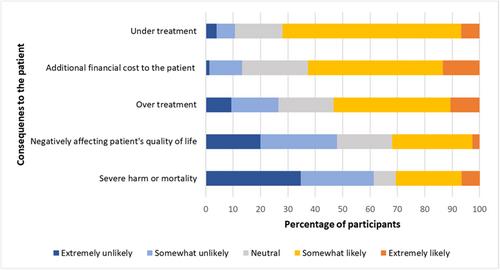Australian Dentists' Knowledge of the Consequences of Interpretive Errors in Dental Radiographs and Potential Mitigation Measures
Abstract
Objectives
Dental radiographs, typically taken and interpreted by dentists, are essential for diagnosis and effective treatment planning. Interpretive errors in dental radiographs, stemming from failures of visual and cognitive processes, can affect both patients and clinicians. This survey aimed to assess the dental practitioners' perceptions of the consequences of these errors and potential measures to minimize them.
Materials and Methods
This online anonymized survey assessed Australian dental practitioners' perceptions of the consequences of these errors and potential mitigation measures using ranking, Likert scale, and open-ended questions. The data were analyzed using descriptive statistics and bivariate analysis.
Results
Participants identified undertreatment (72%) and legal implications (82%) as the most significant consequences of interpretive errors, whereas severe harm to patients was deemed the least likely. Dental practitioners placed a greater emphasis on maintaining a high level of competence and the well-being of their patients. Utilizing high-quality images (63.9%) and appropriate radiographs (59.7%) were identified as the most effective measures to minimize interpretive errors. Participants showed hesitancy regarding the reliance on machine learning as a clinical decision-making tool.
Conclusions
The survey provides valuable practical insights into the consequences and targeted measures to minimize the occurrence of interpretive errors. Efforts to minimize interpretive errors should address patient safety and practitioners' concerns about professional reputation and business viability. The study also suggests further research into the role of machine learning algorithms in reducing interpretive errors in dentistry.


 求助内容:
求助内容: 应助结果提醒方式:
应助结果提醒方式:


